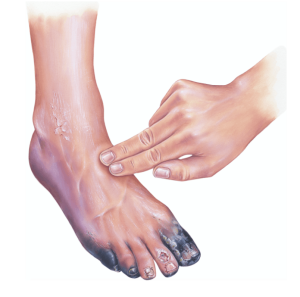10 peripheral vascular disease (PVD) facts
In this article we will describe 10 peripheral vascular disease (PVD) facts.
1. Definition. Peripheral vascular disease (PVD) is a condition characterised by the narrowing or blockage of arteries, predominantly to the legs (and sometimes arms).

2. Cause. The most common cause of PVD is atherosclerosis (also called atheroma), a buildup of plaque in the arteries that reduces blood flow to the extremities such as the legs, arms, and pelvis.
3. Risk factors. Smoking is a significant risk factor for developing PVD. Other risk factors include diabetes, high blood pressure, high cholesterol, CKD (due to renovascular disease), obesity, a family history of the disease, and advancing age.
4. Early symptoms. PVD typically affects the arteries, causing symptoms such as leg pain, cramping, weakness, or fatigue during physical activity. This condition is known as intermittent claudication.
5. Later symptoms. As PVD progresses, it can lead to more severe symptoms, including pain at rest, non-healing wounds or ulcers, gangrene, and even limb amputation in severe cases.
6. Diagnosis. PVD can be diagnosed through various tests, including ankle-brachial index (ABI) measurement, Doppler ultrasound, angiography, and magnetic resonance angiography (MRA).
7. Lifestyle modifications. These are useful and include quitting smoking, regular exercise, and adopting a healthy diet. Combined they can help PVD and slow down its progression.
8. Medication. This includes antiplatelet agents (aspirin, clopidogrel), cholesterol-lowering drugs (statins), and medications to control blood pressure and blood sugar, are commonly prescribed to manage PVD.
9. Angioplasty and surgery. In more severe cases of PVD, procedures like angioplasty and stenting may be performed to open up blocked or narrowed arteries. In some cases, bypass surgery may be necessary to reroute blood flow around the blocked artery.
10. Prevention. Prevention and early detection are crucial in managing PVD. Regular check-ups with a doctor, maintaining a healthy lifestyle, and managing underlying conditions (e.g. diabetes) effectively can significantly reduce the risk and impact of PVD.
Summary
We have described 10 peripheral vascular disease (PVD) facts. We hope it has been useful.

